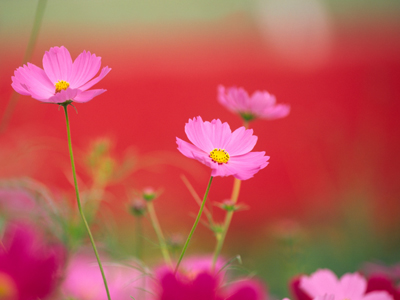
Ask the AI Tutor
Need help with Alliteration 01? Ask our AI Tutor!
AI Tutor - Lucy
Connecting with Tutor...
Please wait while we establish connection

'Look at the pretty pink petals' is an example of the use of alliteration.
Alliteration 01
Alliteration repeats initial sounds for effect. It adds rhythm, focus, and fun to lines in poetry, prose, and adverts.
1 .
The ....... ....... are in the middle aisle next to the vegetables.
boxed fish
frozen fish
large fish
pre-cooked fish
Two "f" sounds form the alliteration here: "frozen fish"
2 .
Are you hungry? Let's find a café for ....... ....... and .......
cakes, coffee, cola
cakes, coffee, tea
egg, chips, cola
fish, chips, coffee
The three "c" sounds of "cakes/coffee/cola" = alliteration
3 .
The art gallery displayed hundreds of ....... ....... and .......
books pots pans
pots pans cups
precious pictures paintings
prints cups pans
Three "p" sounds form the alliteration here
4 .
The sound of ....... ....... created a quiet, calm atmosphere.
intermittent shrieks
loud shouts
murmuring music
frenzied chattering
"Murmuring music" also alliterates on the internal m of "murmur"
5 .
Many ....... and ....... ....... on the river.
boats, barges, bobbed
boats, barges, sailed
boats, ducks, floated
ducks, barges, floated
Use alliteration in writing to make phrases memorable
6 .
A ....... ....... ....... took the friends to the party.
broken, down, lorry
lovely, long, limousine
rusty, old, car
red, old, car
The repeated "l" sound elongates the phrase to some extent, creating a lingering impression
7 .
Mrs. Purple drove a ....... ....... .......
red, Mercedes, quickly
violet, van, violently
white, bus, slowly
gruesome, dented, van
The overuse of alliteration can be jarring. Use the technique selectively
8 .
Peter piper picked a peck of ....... .......
new, potatoes
pickled, herring
pickled, pepper
rosy, apples
Alliteration makes words easy to remember!
9 .
"What a ....... ....... " is a famous song.
Wonderful Day
Wonderful Thing
Wonderful Time
Wonderful World
"Wonderful" and "world" both begin with "w", creating alliteration
10 .
He folded the invitations and put each one in an ....... .......
brown, envelope
empty, envelope
long, envelope
white, envelope
"E" sounds begin words and make the alliteration here. The alliteration of vowel sounds is also known as "assonance"
**Unlimited Quizzes Await You! 🚀**
Hey there, quiz champ! 🌟 You've already tackled today's free questions.
Ready for more?
Ready for more?
🔓 Unlock UNLIMITED Quizzes and challenge yourself every day. But that's
not all...
not all...
🔥 As a Subscriber you can join our thrilling "Daily Streak" against other
quizzers. Try to win a coveted spot on our Hall of Fame Page.
quizzers. Try to win a coveted spot on our Hall of Fame Page.
Don't miss out! Join us now and keep the fun rolling. 🎉
**Unlimited Quizzes Await You! 🚀**
Hey there, quiz champ! 🌟 You've already tackled today's free questions. Ready for more?
🔓 Unlock UNLIMITED Quizzes and challenge yourself every day. But that's not all...
🔥 As a Subscriber you can join our thrilling "Daily Streak" against other quizzers. Try to win a coveted spot on our Hall of Fame Page.
Don't miss out! Join us now and keep the fun rolling. 🎉






